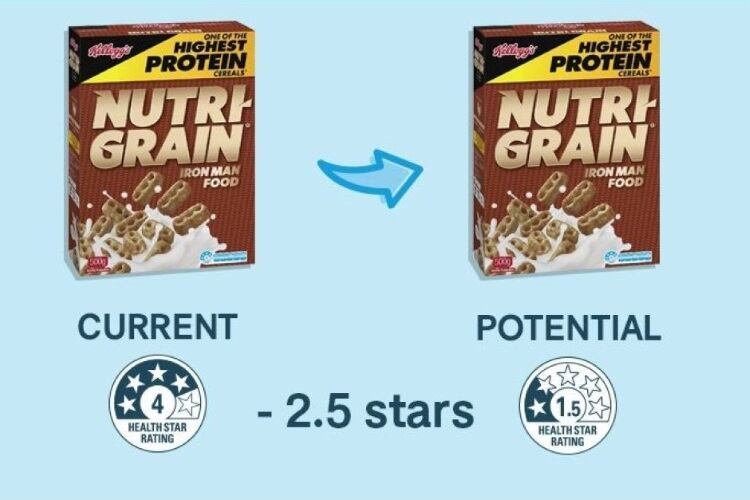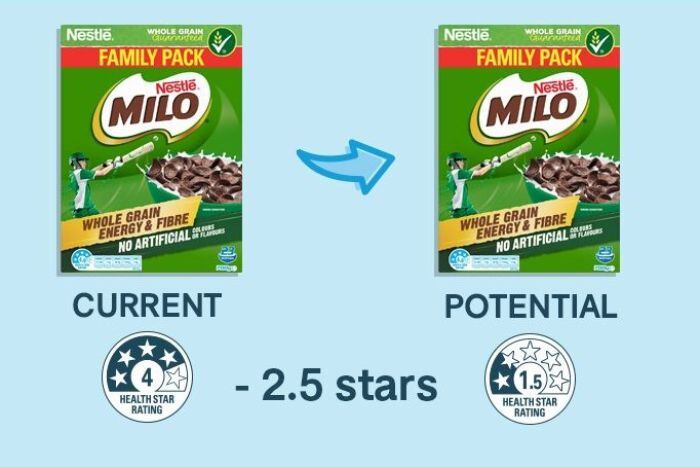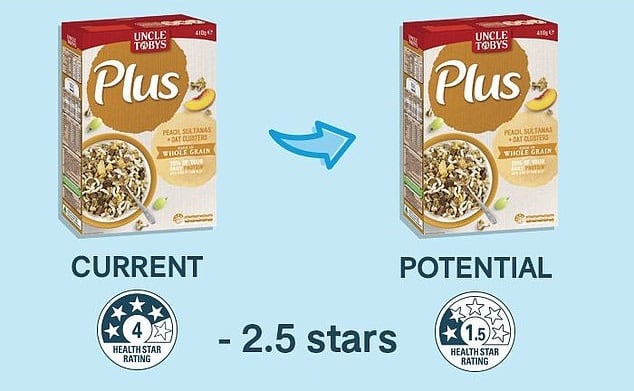According to Australian consumer advocacy group Choice, breakfast cereals are ‘some of the worst offenders’ when it comes to making health claims, despite containing large amounts of added sugar.
In 2014, the Australian government initiated an A$2.1m (US$1.46m) two-pronged approach to educate consumers on how to shop healthy and to encourage the food industry to follow suit.
The system is designed to give an ‘at-a-glance’ rating of packaged and processed foods:
- Foods receive ‘baseline’ (or negative) points for the amount (per 100g or 100ml) of saturated fat, total sugars, sodium and energy.
- Foods receive ‘modifying’ (or positive) points for the amount (per 100g or 100ml) of protein, fiber, fruit and vegetables.

Points are then converted into star ratings, which range between half to five stars. The more stars, the healthier the choice.
The system is supposed to help consumers discriminate between similar foods within the same food category that contain different amounts of ingredients – for example, comparing two loaves of bread on their salt content.
It is also supposed to provide an incentive for manufacturers to reformulate their products with less of the so-called ‘baseline’ ingredients.
However, the system’s voluntary status has, in effect, played against it.
Understandably, producers are happy to advertise two to five stars; they are less likely to put one or half a star on their products.
Shake-up
However, there could be a shake-up to the system. Choice is calling for government to differentiate between naturally occurring sugars and added sugar.
Currently, the Star Rating only includes a total amount of sugar.
According to Linda Przhedetsky, Choice policy and campaigns adviser, not all sugars are created equal and the Health Star Rating algorithm should treat them differently.

“The system doesn’t distinguish between the extra sugar that’s added to foods like breakfast cereals, and the naturally occurring sugars in dairy or fruits,” she said.
She noted the new modeling would highlight a raft of products that are not being accurately represented by the star rating system.
“Some of the findings from our work really surprised us, because we found some products could actually lose as much as two-and-a-half health stars – that’s extremely significant.”
Under the new algorithm, brands like Kellogg’s, Nestle and local favorite Uncle Tobys will feel the pressure, while ‘healthier’ breakfast snacks – like yogurt and fruits – will gain increased ratings.
Kellogg’s Nutri-Grain – advertised as the protein-rich ‘Iron Man’ – contains more than 30% sugar. This will decrease its Choice rating from four to just under 1.5 stars.
Nestle’s Milo and Uncle Tobys Plus Protein cereals will also lose 2.5 stars.
Comment
A spokeswoman for Nestle said the company has made changes to Milo cereal since 2007 to improve its nutritional value, but as consumers choose chocolate cereals for the taste, “there comes a point where you can’t reduce sugar without significantly affecting the flavor.”

Kellogg’s commented, “From the research we’ve seen, the Health Star Rating system is working as it was designed to, to help consumers make healthier choices within the same food category.”
There are also calls by for the government to go even further than the draft report’s recommendations, with some advocates saying added sugars should be included on nutrition information panels.
Currently, only 30% of products in Australia have health star ratings.
The system was brought in to lower the country’s obesity rate – one of the highest in the world – with over 63% of adults tipping the high end of the scales in 2014.


